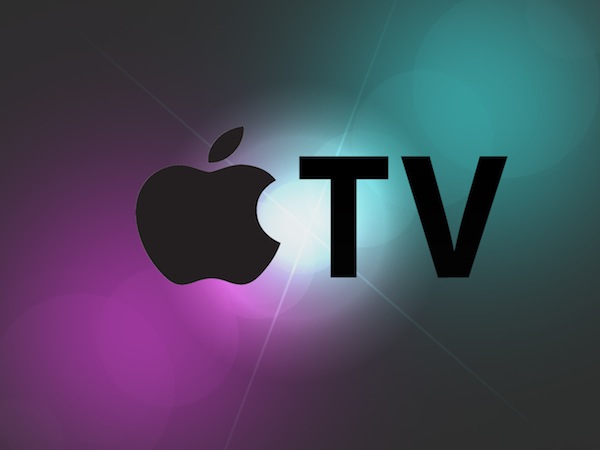Why Apple Will Never Make a TV Set
News that Steve Jobs dismissed the idea of Apple building its own TVs is no surprise to anyone looking at the falling prices of TVs.

Apple has earned the praise it's received for redefining the music player, smartphone and tablet business. But that success has led many people to believe that Apple can "fix" any type of tech product — and the TV interface has been the latest subject of that speculation.
It seems all but certain that Apple will take up this challenge soon with a new Apple TV set-top box, but not a whole TV. TVs don't earn high profits nor do they "turn over," that is, get replaced, as often as mobile devices. The latest evidence comes from the new book "Haunted Empire: Apple After Steve Jobs" (HarperBusiness, March, 2014)by Yukari Iwatani Kane, former Wall Street Journal reporter on the Apple beat. In the book, Kane wrote that when Jobs was asked in a 2010 meeting with senior executives if Apple would get into the TV business, he said, "TV is a terrible business. They don't turn over and the [profit] margins s---."
MORE: 7 Things the Next Apple TV Needs
You don't have to be an industry expert to realize TV prices are falling continuously. Not to mention, if Apple were to enter the TV business, it would be going up against a lot of companies that are already bringing innovations to the TV experience.
Apple has lots of competition
In fact, TV may not be especially in need of fixing — for most people, anyway. While online video is a fast-growing field, that doesn't mean people are ditching traditional cable and satellite service. In Nielsen's latest Cross-Platform Report for the fourth quarter of 2013 (issued this month), traditional TV still dominates how Americans watch video. In the fourth quarter Americans spent an average of 1 hour and 23 minutes per month watching TV on a smartphone and an average of 7 hours and 43 minutes watching video on a computer. In comparison, they spent an average of 155 hours and 23 minutes watching live TV and 14 hours and 40 minutes watching DVR recordings.
The share of online video has been growing and seems likely to continue growing, but it's nowhere near challenging good old cable, satellite and antenna TV for viewing supremacy. People may gripe about the quality of the cable-box interface, but most are still getting along with it.
That doesn't mean companies haven't stepped up to improve the TV experience. TiVo is providing its interface to cable companies and recently sealed a deal with the country's biggest cable company, Comcast, to be deployed nationwide. If Comcast succeeds in buying Time Warner Cable, TiVo could extend to millions more cable subscribers. Add into the mix new Roku devices and Roku-branded TVs, Chromecast, the Xbox One and much smarter smart TVs announced this year from LG, Sharp and others, and the need for Apple to remake the TV experience fades.
Falling prices
Even if Apple does have a revolutionary take on how to deliver TV, it's better off making a new set-top box than a whole television.
These days, there's not much money to make on TVs. Pioneer-brand plasmas were often praised for their image quality, but their high prices forced Pioneer out of the entire TV business in early 2009. Aside from a minority contingent of well-heeled videophiles, most consumers would rather pay less for a satisfactory TV than shell out more for a premium model.
"Generally, the [profit] margins on televisions have been declining," Shawn DuBravac, chief economist at the Consumer Electronics Association, told Tom's Guide by email. According to CEA, the average price of TVs has nearly halved in six years, from $904.00 in 2008 to $495 in 2013, even though the average screen size has nudged up a bit. (These are prices TV makers charge to retailers, the data that CEA collects.)
Moreover, TV makers' efforts to boost prices have flopped. In 2010, Stan Glasgow, then-president and chief operating officer of Sony Electronics, told analysts that 3D TV would go mainstream in about two years. But 3D TV was pretty much a flop. 3D capability is now built into many TVs, just like a radio is now included in most cars. But it's not a selling feature.
MORE: Roku vs. Apple TV vs. Chromecast: Which Device Wins?
4K TV is the next attempt to boost TV prices. Right now, a 4K TV will cost you at least 50 percent more than a 1080p HDTV of the same size. But sales of 4K TVs still make up less than 5 percent of U.S. TV units sold, according to ABI Research. And prices are dropping fast. The CEA predicts that by this summer, average 4K TV prices will have dropped by 50 percent from what they were in summer 2013.
TV makers can't even charge more for their newer 4K TVs than for last year's crop, as HD Guru reported this week. "Many of the 2014 [4K TVs] are priced at or near the close-out price of the most equivalent 2013 HDTVs and 4Ks." For example, the article said, a 2013 55-inch Samsung 4K TV and its 2014 equivalent, are both priced at $2,997.99. The price pressure will keep coming; budget-focused TV maker Vizio has promised a 55-inch 4K TV for $1,000 this year.
Could Apple spruce up the TV interface so much that people would pay a premium — even more so than they would for a TV with four times the resolution of an HDTV? Even if Apple decided to go premium by making its smart TV also a 4K model, it would be hopping into a tiny market on a fast-declining price curve.
Apple is conservative
Despite all the talk of Apple being a radical innovator, it's also a cautious company. Apple took years to get into the MP3 player, smartphone and tablet markets, waiting to first see what other companies were doing. It's been especially cautious with its set-top box; the first Apple TV came out in 2010. In fact, even the current model has fewer capabilities than the latest Roku devices, including the new $50 HDMI Roku Streaming Stick.
The market for connected TVs, including set-top boxes, is growing. CEA estimates that 11 million of them will be sold in 2014 — nearly double the 6.5 million units sold in 2012.
But Apple can still make a big contribution in this category with a new Apple TV. The company sold more than $1 billion worth of current Apple TV models in 2013. But if Apple were to get into the business of making whole TVs, it would be starting from scratch in a market that's already declining. That's not a positive example of thinking different.
Follow Sean Captain @seancaptain and on Google+. Follow us @tomsguide, on Facebook and on Google+.
Sign up to get the BEST of Tom's Guide direct to your inbox.
Get instant access to breaking news, the hottest reviews, great deals and helpful tips.
Sean Captain is a freelance technology and science writer, editor and photographer. At Tom's Guide, he has reviewed cameras, including most of Sony's Alpha A6000-series mirrorless cameras, as well as other photography-related content. He has also written for Fast Company, The New York Times, The Wall Street Journal, and Wired.
